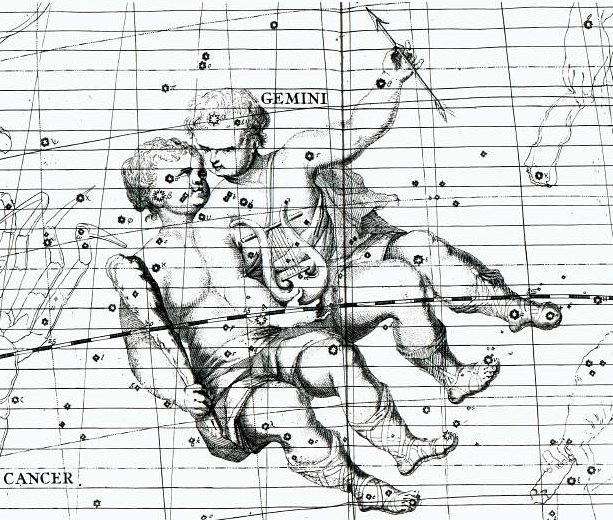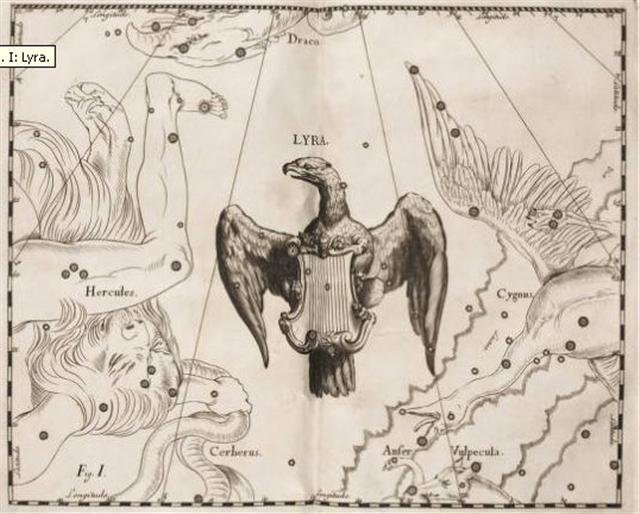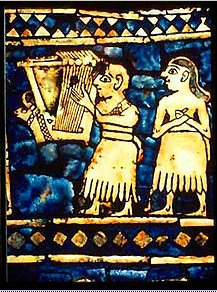3. The planet named Mars and the month named March (in Swedish Mars) evidently were perceived as being the same. Therefore we should look at the planet Mars in the month of March. And we can then guess that April 14 (4-14 → Bharani, *41.4, the birth place, → 14 * 29½ + 1) could be a cardinal point (limit, knee). Below is a view from that date:
Here Mars has arrived precisely at the Knee of the Outstreched (Mebsuta) leg of Castor. As we can see Gemini has 2 legs, one for Castor and one for Pollux, but they have been doubled in the illustrations:
Due to the rising daylight ('red cloth', tapa mea) north of the equator in the month of March the time of observation has been shifted by me from 18.30 to 21.00. The only other planet visible in the view above is Venus (down in the right corner). From Mebsuta (ε Gemini) in June 29 to Double Double (→ a pair of legs for the Gemini double figure) - i.e. to the star ε Lyrae in December 29 - there were *283.7 - *100.7 = *183 (→ 366 / 2) right ascension days:
The connection between Gemini at the ecliptic and Lyra at the north pole has been made clear from Castor holding this kind of string instrument.
Once upon a time Mars had been at March but since then the precession had moved the whole circus to June in the Sun calendar. ... The Euripus, which has already come up in the Phaedo, was really a channel between Euboea and the mainland, in which the conflict of the tides reverses the current as much as seven times a day, with ensuing dangerous eddies - actually a case of standing waves rather than a true whirl. We meet the name again at a rather unexpected place, in the Roman circus or hippodrome, as we know from J. Laurentius Lydus (De Mensibus I.12), who states that the center of the circus was called Euripos; that in the middle of the stadium was a pyramid, belonging to the Sun; that by the Sun's pyramid were three altars, of Saturn, Jupiter, Mars, and below the pyramid, altars of Venus, Mercury, and the Moon, and that there were not more than seven circuits (kykloi) around the pyramid, because the planets were only seven. (See also F. M. Cornford's chapter on the origin of the Olympic games in J. Harrison's Themis (1962), p. 228; G. Higgins' Anacalypsis (1927), vol. 2., pp. 372ff.) This brings to mind (although not called Euripus, obviously, but 'the god's place of skulls') the Central American Ball Court which had a round hole in its center, termed by Tezozomoc 'the enigmatic significance of the ball court', and from this hole a lake spread out before Uitzilopochtli was born. See W. Krickeberg, 'Der mittelamerikanische Ballspielplatz und seine religiöse Symoblik', Paideuma 3 (1948), pp. 135ff., 155, 162. And here the unstable Euripus of the Ocean, which flows back to the beginnings of its mysterious source, dragged with irresistible force the unhappy sailors, thinking by now only of death, towards Chaos. This is said to be the maw of the abyss, that unknown depth in which, it is understood, the ebb and flow of the whole sea is absorbed and then thrown up again, which is the cause of the tides. This is reflection of what had been a popular idea of antiquity. But here comes a version of the same story in North America. It concerns the canoe adventures of two Cherokees at the mouth of Suck Creek. One of them was seized by a fish, and never seen again. The other was taken round and round to the very lowest center of the whirlpool, when another circle caught him and bore him outward. He told afterwards that when he reached the narrowest circle of the maelstroem the water seemed to open below and he could look down as through the roof beam of a house, and there on the bottom of the river he had seen a great company, who looked up and beckoned to him to join them, but as they put up their hands to seize him the swift current caught him and took him out of their reach. It is almost as if the Cherokees have retained a better memory, when they talk of foreign regions, inhabited by 'a great company' - which might equally well be the dead, or giants with their dogs - there, where in 'the narrowest circle of the maelstroem the water seemed to open below' ...
|
|||||||||||||||||||||||||||||||||||||||||||||||||||||||||||







